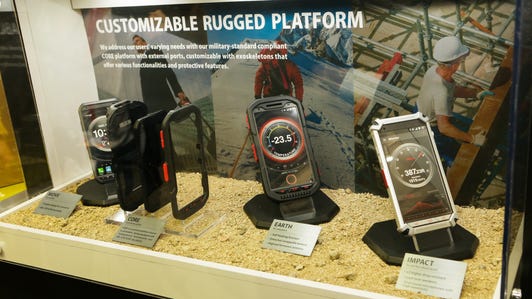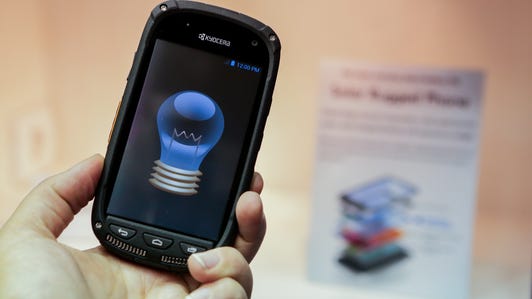

Now playing:
Watch this:
The future of mobile, according to Kyocera
1:41
BARCELONA – Similar to last year’s show, Japanese-based Kyocera displayed a number of its concept mobile devices and gadgets at MWC 2015. Among its idea of providing a line of customizable durable phones and an emergency kit of the future, it also gave a glimpse of what a Kyocera device running Windows Phone would look like.
More from MWC 2015:
- Runcible is the classiest, watch-iest smartphone we’ve ever seen (hands-on)
- Say hi to the new HTC: One M9 phone, fitness band, VR headset
- Samsung Z1 Tizen-based phone mimics Android, cuts costs (hands-on)
In addition to including a first-aid kit, a blanket, and water to its emergency kit, Kyocera added a dust- and waterproof emergency link. The device helps your phone connect to the grid for up to 50 miles through a long-range radio, in case you find yourself in a total dead zone on the side of the road. The kit also has a solar panel charger, to juice up your devices using solar energy, and a low-powered tablet complete with a kickstand and e-paper display.
Kyocera also envisioned a line of durable handsets that users can customize according to their needs. All phones will have a rugged “core” platform, that can then have different degrees of ruggedness. One option is slightly rugged, thin, and still consumer friendly. Others include a very rugged model that can survive cold temperatures and has an extra antenna, and another is extremely rugged with dual-speakers and bumpers that protect the corner.
The company also had a reference model of a Kyocera handset running Windows Phone 8.1. WP enthusiasts should get too eager however — the company is far from releasing a viable end-product running the Microsoft mobile OS.
Kyocera’s solar smartphone concept is a hot idea (pictures)






+4 more
Lastly, there was a rugged phone with a 0.6mm-thin solar film embedded in the back of the handset’s display, so you can charge your device anywhere the sun is shining. The solar capabilities is meant as a supplemental charging method, instead of a primary one. Due to its current inefficiencies, however — the model requires two hours of charging gives a user an extra five minutes of talk time — Kyocera won’t be ready to release a working solar-charging handset until it can boost its performance.
Again, all the products are just prototypes and reference devices, so nothing is no where near production just yet. But if this gives us a glimpse of what directions Kyocera may go, its future could provide quite interesting.



